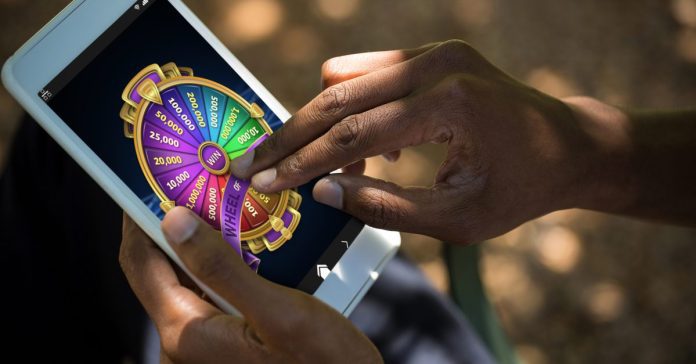How a Beginner Became an Expert in Color Prediction Games in 6 Months
Becoming an expert in any field can be a daunting challenge, especially in games that combine chance, strategy, and quick decision-making. Online color prediction games, known for their simplicity and unpredictability, may seem like a game of pure luck to the uninitiated. However, with determination, discipline, and a learning-focused approach, one beginner’s journey to mastery in just six months reveals that expertise is attainable.
Month 1: Discovering the Basics
The first month was all about getting familiar with the mechanics. Our beginner was intrigued by the simplicity of choosing between two or three colors in each round. However, instead of diving in recklessly, they took the time to:
- Learn the Rules: They thoroughly read the instructions provided by the platform like bdgwin to understand how the game works and how outcomes are generated, often driven by RNGs (Random Number Generators).
- Observe Without Playing: Rather than placing bets immediately, the beginner spent time observing games in progress, identifying recurring patterns, and becoming familiar with pacing and outcomes.
- Start Small: With a modest budget, they played their first few rounds, focusing on understanding the flow rather than chasing wins.
By the end of Month 1, they gained confidence in navigating the platform and understanding the basics.
Month 2: Building Discipline and Managing Risks
In Month 2, the beginner realized that winning consistently wasn’t just about luck—it required discipline and self-control. They took steps to build a strong foundation:
- Set a Budget: They established strict financial limits for each session to avoid overspending. This allowed them to play responsibly and reduce emotional stress from losses.
- Track Performance: They started keeping a record of rounds—wins, losses, colors chosen, and bet amounts. This data helped them identify trends and avoid repeating mistakes.
- Control Impulses: The beginner avoided the common pitfall of chasing losses by sticking to their budget and taking breaks when necessary.
This phase taught them the importance of emotional control and rational decision-making.
Month 3: Diving Into Strategy
By the third month, the beginner shifted their focus to developing strategies based on observation and experimentation:
- Analyze Probabilities: They reviewed their recorded data to calculate the frequency of each color’s appearance, even while understanding that outcomes were random.
- Experiment With Patterns: While aware of the randomness, they tested strategies like alternating choices, repeating previous colors, or betting on “least common” outcomes to find what worked best.
- Study Other Players: Watching experienced players helped the beginner understand different approaches and adopt useful tactics.
Though the game remained unpredictable, their strategic mindset began yielding more consistent results.
Month 4: Embracing Adaptability
Month 4 was about refining adaptability, a skill essential for thriving in a dynamic game environment. The beginner learned to:
- Switch Strategies: They avoided becoming overly reliant on a single method. When one approach wasn’t effective, they adapted quickly to new ones.
- Evaluate Risks: They adjusted bet sizes based on recent performance, increasing stakes during wins and scaling back during losses.
- Stay Flexible: By observing shifts in the game’s rhythm, they avoided the trap of rigid gameplay and maintained agility in decision-making.
Adaptability helped the beginner stay ahead and maximize opportunities during streaks of good fortune.
Month 5: Gaining Confidence Through Experience
Confidence grew naturally as the beginner continued practicing and refining their approach:
- Mastering Emotional Resilience: Wins and losses were treated as part of the process. This mindset allowed them to remain calm and focused regardless of outcomes.
- Developing Intuition: Through consistent practice, they gained a sense of timing and judgment, making more informed choices in each round.
- Minimizing Errors: Mistakes from earlier months—like overconfidence or impulsive betting—became lessons that sharpened their skills.
At this stage, the beginner felt more in control, no longer intimidated by the randomness of the game.
Month 6: Achieving Expert Status
In the final month of their journey, the beginner realized they had reached a level of expertise:
- Data-Driven Decisions: They combined intuitive judgment with insights from months of recorded data to make calculated predictions.
- Efficient Gameplay: Sessions were more streamlined, with fewer mistakes and optimized strategies.
- Balanced Mindset: The game was no longer just about winning—it became an enjoyable activity grounded in skill, discipline, and responsible gaming.
Their journey to mastery underscored the importance of persistence and a learning-focused mindset.
Conclusion
In just six months, this beginner transformed into an expert in color prediction games through a combination of patience, strategy, and emotional control. Their journey highlights that while luck remains a factor, success is often a result of preparation, adaptability, and continuous improvement. For anyone inspired to embark on a similar path, the key takeaway is clear: with the right approach, expertise is well within reach.






